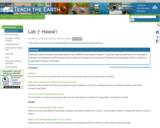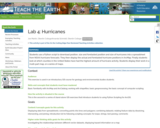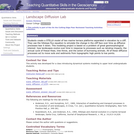
Human-induced nutrient loading of the world's oceans has been linked to increased and prolonged algae blooms, sometimes with potentially deadly consequences. In this investigation, students will create their own algal blooms, analyze satellite images of chlorophyll concentrations in the Sea of CortÃs, and learn about two alarming consequences of excessive algae growth-—dead zones and harmful algae blooms (HABs).
(Note: this resource was added to OER Commons as part of a batch upload of over 2,200 records. If you notice an issue with the quality of the metadata, please let us know by using the 'report' button and we will flag it for consideration.)
- Subject:
- Biology
- Geoscience
- Life Science
- Oceanography
- Physical Science
- Material Type:
- Activity/Lab
- Provider:
- Science Education Resource Center (SERC) at Carleton College
- Provider Set:
- Teach the Earth
- Date Added:
- 03/31/2021





